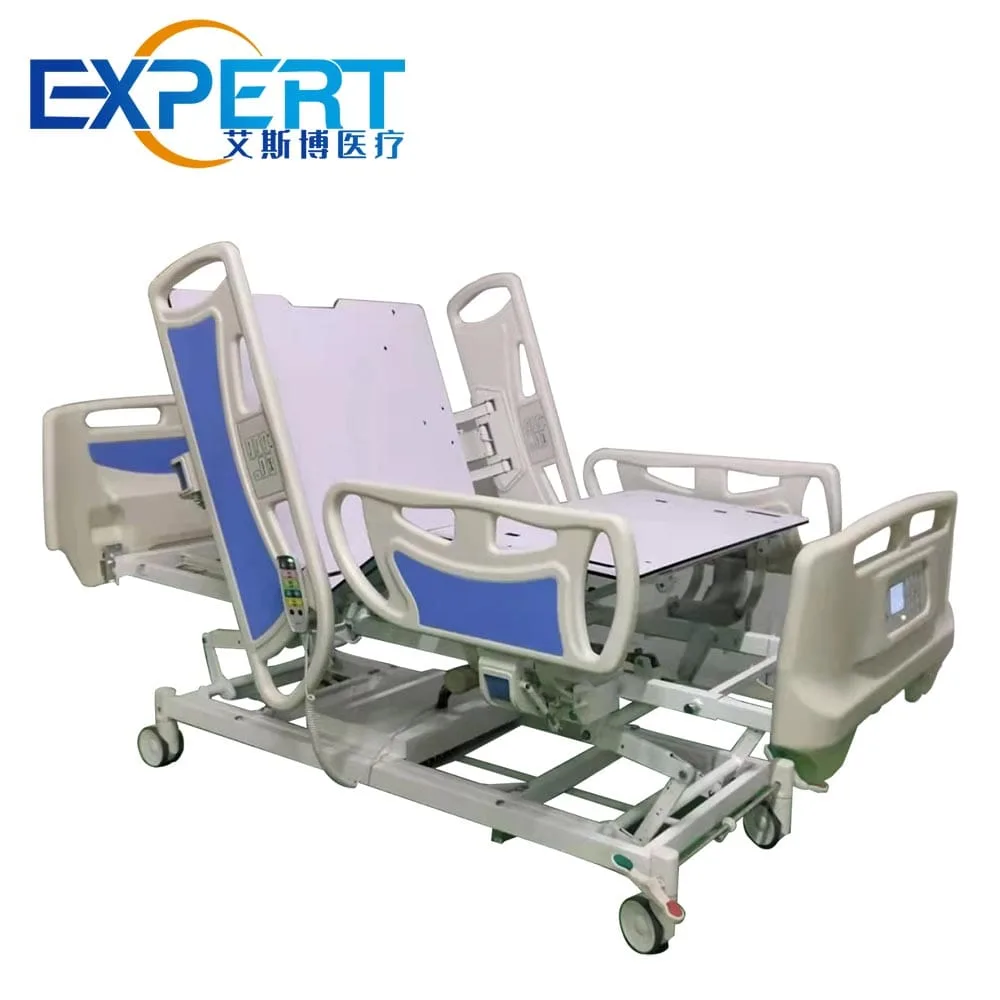Indirizzo
304 Il cardinale nord S.
Dorchester Center, MA 02124
Ore di lavoro
Dal lunedì al venerdì: 7:00 - 19:00
Fine settimana: 10:00 - 17:00
Benvenuti nel mio blog!
Prima di immergerci nei contenuti, mi piacerebbe che ti unissi a me sulle mie piattaforme social, dove condivido altre intuizioni, interagisco con la community e pubblico aggiornamenti. Ecco come puoi metterti in contatto con me:
Facebook:https://www.facebook.com/profile.php?id=100071234835011
LinkedIn:https://www.linkedin.com/company/74943205/admin/dashboard/
YouTube:www.youtube.com/@shandongexpertmedicalequip4695
TikTok:www.tiktok.com/@expertmedical
Ora, iniziamo il nostro viaggio insieme. Spero che tu trovi il contenuto qui perspicace, coinvolgente e prezioso.

When selecting the right equipment for healthcare facilities, understanding hospital bed types is crucial for ensuring patient comfort, safety, and efficient care delivery. At Expert, a high-tech enterprise specializing in the research, development, production, and global distribution of operating room and intensive care unit (OR & ICU) equipment, we recognize the importance of choosing the appropriate hospital bed to meet diverse medical needs. This guide explores the various hospital bed types available, their features, and key considerations for buyers, helping healthcare providers make informed decisions.
The choice of hospital bed types directly impacts patient outcomes and staff efficiency. Different medical conditions require specific bed functionalities, such as adjustability, mobility, or specialized support for critical care. By selecting the right hospital bed types, facilities can enhance patient recovery, reduce caregiver strain, and optimize operational workflows. For instance, beds designed for ICU settings prioritize advanced monitoring and accessibility, aligning with Expert’s mission to deliver cutting-edge OR & ICU solutions worldwide.


When evaluating hospital bed types, buyers should focus on several critical features:
These features help tailor hospital bed type to specific clinical requirements, ensuring versatility across general wards, ICUs, and long-term care settings.
Hospital bed types are broadly categorized based on their functionality and intended use. Below, we outline the most common options to help buyers understand their choices.
Manual hospital bed types are operated by hand cranks, making them cost-effective for facilities with budget constraints. These beds are suitable for settings with stable patients who require minimal positional adjustments. However, they may increase caregiver workload due to the lack of automation.
Electric hospital bed types, a cornerstone of Expert’s OR & ICU offerings, use powered controls for seamless adjustments. These beds enhance patient comfort and reduce physical strain on staff, making them ideal for dynamic environments like intensive care units. Features like programmable positions and integrated monitoring systems are common in advanced models.
Designed for heavier patients, bariatric hospital bed types offer reinforced frames and higher weight capacities, typically exceeding 500 pounds. These beds prioritize stability and comfort, with wider mattresses and robust support systems to accommodate diverse patient needs.
Pediatric hospital bed types are tailored for younger patients, featuring smaller dimensions, vibrant designs, and enhanced safety features like adjustable side rails. These beds create a reassuring environment for children while supporting medical care, aligning with Expert’s commitment to versatile healthcare solutions.
Specialty hospital bed types, such as those for critical care or post-surgical recovery, include advanced features like pressure-relieving mattresses or integrated ventilators. These beds are essential in Expert’s ICU-focused portfolio, catering to high-acuity patients with complex medical needs.
To assist buyers in evaluating hospital bed types, the following table summarizes key characteristics of the main categories. This overview highlights functionality and suitability without focusing on specific brands.
| Tipo di letto ospedaliero | Adattabilità | Capacità di peso | Il migliore per | Caratteristiche principali |
|---|---|---|---|---|
| Manuale | Hand-crank adjustments | Fino a 350 libbre | General wards, low-budget facilities | Cost-effective, simple design |
| Elettrico | Motorized controls | Up to 500 lbs | General wards, ICUs | Programmable positions, ease of use |
| Bariatrico | Motorized or manual | 500+ lbs | Bariatric care | Reinforced frames, wider mattresses |
| Pediatrico | Manual or electric | Up to 200 lbs | Pediatric wards | Child-friendly design, adjustable rails |
| Specialità | Advanced motorized systems | Varia | ICU, post-surgical care | Pressure relief, integrated monitoring |
This table provides a snapshot of how hospital bed type align with specific healthcare needs, helping buyers narrow down options based on functionality and patient requirements.
Selecting the right hospital bed types involves balancing clinical needs, budget, and facility constraints. Key factors include:
By aligning these factors with the capabilities of different hospital bed type, buyers can make strategic purchasing decisions.
Investing in appropriate hospital bed types yields multiple benefits:
These advantages underscore the importance of thoughtful selection in optimizing healthcare delivery.
Proper maintenance extends the lifespan of hospital bed type and ensures patient safety. Regular cleaning, inspection of mechanical components, and software updates for electric beds are essential. Expert’s global support services emphasize proactive maintenance to keep OR & ICU equipment, including hospital bed type, in top condition. Facilities should establish maintenance schedules and train staff to identify issues early, ensuring uninterrupted functionality.

The evolution of hospital bed types reflects advancements in medical technology. Current trends include:
These innovations highlight how hospital bed type are adapting to meet the needs of future-focused healthcare facilities.
Scegliere il giusto tipi di letti ospedalieri is a pivotal decision for healthcare providers aiming to deliver exceptional patient care. By understanding the features, benefits, and applications of various hospital bed types, facilities can align their purchases with clinical and operational goals. Expert, a leader in OR & ICU equipment, offers a range of high-quality hospital bed types designed for global markets. Contattaci today to explore our solutions and elevate your facility’s care standards.
What are the main hospital bed type available?
The primary hospital bed type include manual, electric, bariatric, pediatric, and specialty beds, each designed for specific patient needs and care settings.
Come faccio a scegliere quello giusto? tipi di letti ospedalieri per la mia struttura?
Consider patient demographics, facility type, budget, and staff capabilities. Electric hospital bed types suit dynamic environments, while manual beds are cost-effective for stable patients.
Are electric hospital bed type worth the investment?
Yes, electric hospital bed type enhance patient comfort and staff efficiency, making them ideal for high-acuity settings like ICUs, where Expert’s solutions excel.
